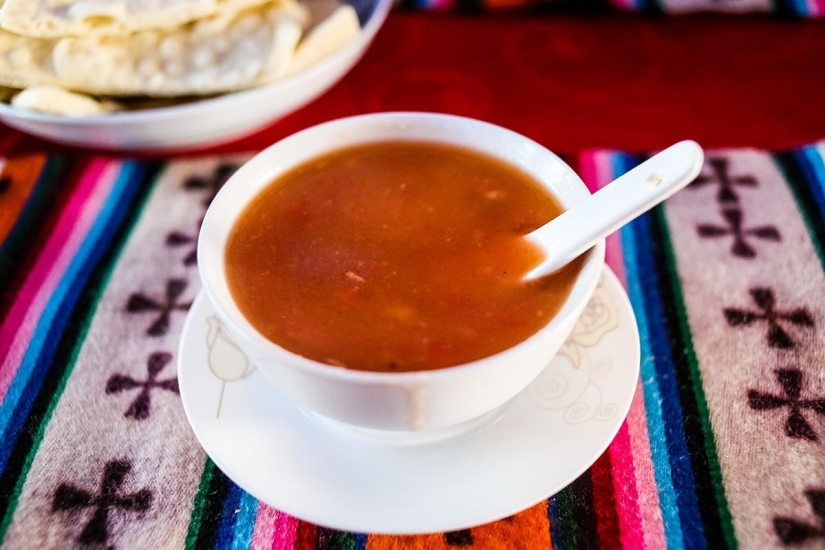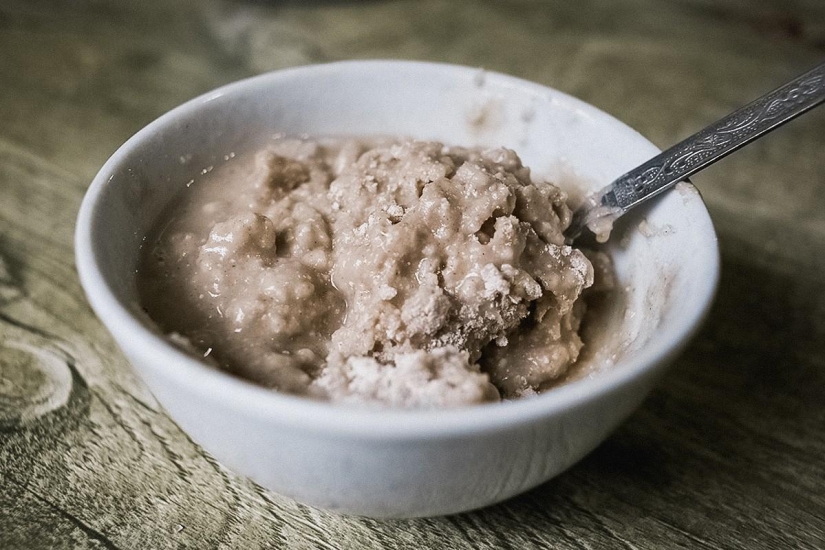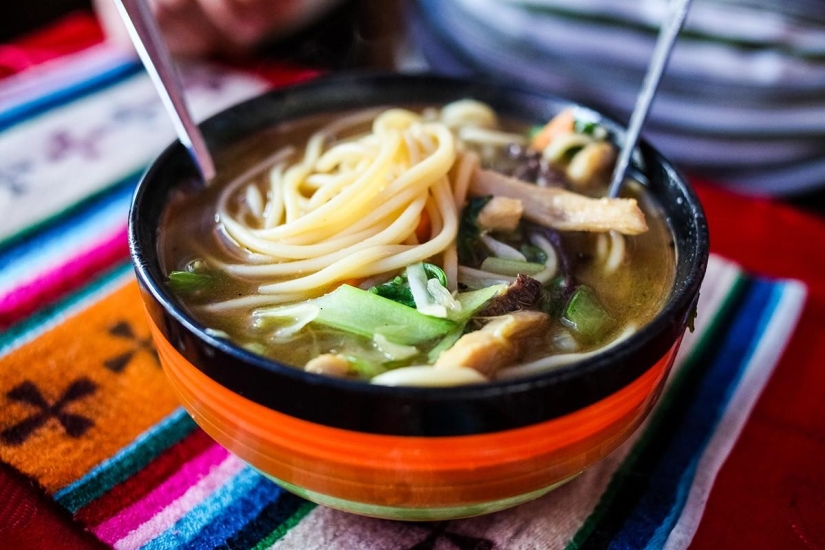Tibetan cuisine: what to eat in the most magical place on Earth
Categories: Asia | Food and Drinks | Travel
By Pictolic https://pictolic.com/article/tibetan-cuisine-what-to-eat-in-the-most-magical-place-on-earth.htmlHimalayas. Tibet. Something cosmic and unearthly sounds already in the names themselves. They attract travelers from all over the world. No one could resist the magical charm of Tibet, including our team, which made a two-week trip to its ten cities.


In Tibet, everything is unusual and usual at the same time. Harsh climatic conditions, highlands, scorching sun, strong winds and sandy soil have a primary impact on the cuisine, which is not particularly diverse.

The basis of the diet is milk and yak meat, or rather, in the case of milk — not yak, but dri (lady yak, as the Tibetans themselves say), and barley flour. Sometimes goat meat and mutton are also used. In any place located above 4000 meters above sea level, you will be offered exclusively dishes from these products.

A typical Tibetan cafe. It should be noted that the cafe is very dirty. In the highlands, where it is far to go for water, you will be served common spoons and forks from the same bowl and there is no certainty that they were washed. It's a little shocking at first, but then you don't even pay attention.

Menu. We are lucky, as two of our company are studying the Tibetan language.

The most popular vegetables are tomatoes and onions. You can taste tomato soup everywhere, but the consistency and taste will be very different.

The soup is very tasty and sometimes so thick that it looks more like a sauce for meat. It can be both spicy and almost bland. This is probably the most delicious dish in Tibet.

And every morning in any cafe you will be offered an omelet. Where eggs are taken at an altitude of over 4000 m above sea level remains a mystery to us. We haven't seen a single chicken. Even the egg soup is actually a soup with a sliced omelet. It seems to me that they make it from a dry mixture and especially for foreigners. Tibetans themselves start every morning with tsampa…

Tsampa is the most common dish. This is far from a delicacy, and Tibetans do not eat it from a good life, but simply because there is often nothing else to eat.

Tsampa is a mixture of dri (female yak) milk, butter and barley flour. Barley, according to Tibetan medicine, is a good product for giving strength. There is a lot of iron in barley, and with its frequent use, traditional anemia problems associated with poor nutrition in the mountains are eliminated. In addition, barley does a good job of eliminating edema, which often develops in monks from a sedentary lifestyle and sitting in one position for a long time. Iron also has a good effect on the lungs and bronchi, which often have problems from mountain wind and cold.

Every morning in any cafe or dining room of the guesthouse you can be treated to tsampa. It tastes like ground oatmeal, which is given to babies up to a year old. We were treated to tsampa for free, this is the cheapest dish. You are served a large bowl of flour, a thermos with salted Tibetan tea, sugar and butter, and you mix the ingredients yourself at your discretion — someone likes liquid, someone likes thick tsampa. Tibetans usually make very thick tsampa and eat it with their hands.

The second most popular national dish is momo dumplings. If there is a single dish that can represent Tibetan cuisine, it is just them. Momo is steamed dumplings, they are served on any weekday and on holidays. There is only one exception — momo is never eaten on the first day of the new year, because the meat hidden in the dough means hidden luck.

Momo preparation takes a lot of time and effort, so several people work on them at once. Men usually chop meat, and women make dumplings. All the subtleties of the momo cooking technique are aimed at preserving the juices inside. Therefore, it is better to chop meat than grind it, and vegetables should be handled very carefully. Besides, momo can't be digested.
Thukpa

Another very popular dish is soups — thukpa and thentuk, which differ in the shape of noodles. Long noodles are added to thukpu, and flat noodles are added to thentuk.

Thukpa with meat. One such portion replaces both the first and the second at once. The soup is very tasty, but with yak meat — for an amateur.

Thukpa with vegetables.

Thukpa of wide noodles.

Vegetable soup.

Chicken soup — oddly enough, the most unsuccessful soup with a strange taste. No one could eat it.

Tibetans bake their national bread, which, as in many Asian countries, is basically similar to our lavash. The only exception is steamed tingmo bread, which most likely also came from Chinese cuisine.

Tortillas with hot sauce.

Steamed fried bread. Steam bread is very specific — we, for example, could not eat it. It tastes like soaked crackers.

Rice with vegetables. Rice in Tibet is simply excellent — both with vegetables and meat.

Rice with yak meat and vegetables.

Noodles with meat and vegetables.

Noodles with omelette and meat.

Fried vegetables.

In some cafes closer to the border with Nepal, you can taste almost European cuisine. For example, fried fish with French fries.

Or fried potatoes. However, Tibetans have problems with fried potatoes, especially those who live high in the mountains. We could not explain in any way that it should be fried longer. They ate almost raw, but in those conditions it was also a delicacy.

Some monasteries have their own kitchen, where you can have a very hearty lunch for 40 rubles. There was almost no money left, and for 40 rubles we received such a portion of delicious rice and fried vegetables — it was, perhaps, our most delicious lunch.
Of the drinks, the most popular, of course, is tea. There are two unique types of tea in Tibet. The first is cha ngamo, for foreigners Tibetans call it "sweet tea" ("sweet tea"). It is boiled milk of a female yak, butter, a little black tea and sugar. Very tasty and satisfying.
The second is cha suima, aka "tea with butter", "salted tea", "churned tea". It is prepared from pressed pu-erh, which is boiled in milk, and then whipped together with melted yak butter and salt in special wooden donmo churns. Nowadays, this traditional device has been replaced by an electric whisk, which is available in any family, because salty Tibetan tea is drunk in huge quantities by both adults and children. Tibetans carry thermoses with such a drink everywhere: to work, in the field, on a walk. Any Tibetan will be happy to treat you to tea with milk. It warms well, protecting from the piercing Tibetan wind. Also, cha suima is used to make tsampa.
In Tibetan restaurants, you can find other drinks borrowed from India and China. For example, babao tea ("eight jewels"), which came from Yunnan province. This is a traditional Chinese mixture of eight types of flowers and dried fruits. You can also find ginger and lemon tea popular in India and Nepal, but it will be quite expensive in these parts. Of course, civilization has penetrated even to the most remote corners of the earth, and you can buy tea bags everywhere.

Ginger tea.

Probably, the story about Tibetan cuisine would not be complete without mentioning the Tibetan low-alcohol drink chang, or ne chang. This barley wine, which is often called beer in the West, has a peculiar taste and is not very strong — only 3.8%. In stores you can buy it in blue or red jars, and in restaurants there is an opportunity to try homemade chang. The traditions of its use differ slightly from district to district — for example, in Shigatse, it is customary to add a little tsampa to a glass of chang, which will never be done in Lhasa. But in any case, there are a lot of chang lovers in Tibet. As for real beer, here it is represented by only one local brand — "Lhasa". However, finding popular European beer brands is also not a problem here.
Bon appetit and amazing travels!
Photo: Ekaterina Ageeva / Text: Sergey Martynov
Keywords: In search of magic | Himalayas | Food | Cuisine | Tibet
Post News ArticleRecent articles

May West once jokingly said that she should be given a license to invent sex, which she discovered for Americans. The name of this ...

Thailand is a kingdom of amazing beauty, where the colors of nature mingle in a captivating palette of rich and varied landscapes. ...
Related articles

We live in a society that even in the 21st century willing to believe in omens and superstitions. Among them are quite stupid, for ...

Looks can be deceiving not only in humans, but some items, the real purpose of which is failing. At first glance, this fragrant ...

As a rule, people do not supply the body with enough green leafy vegetables necessary for well-being. One green cocktail a day can ...

In the late 1960s and early 1970s, thousands of young people from all over the world embarked on an incredible journey that would ...